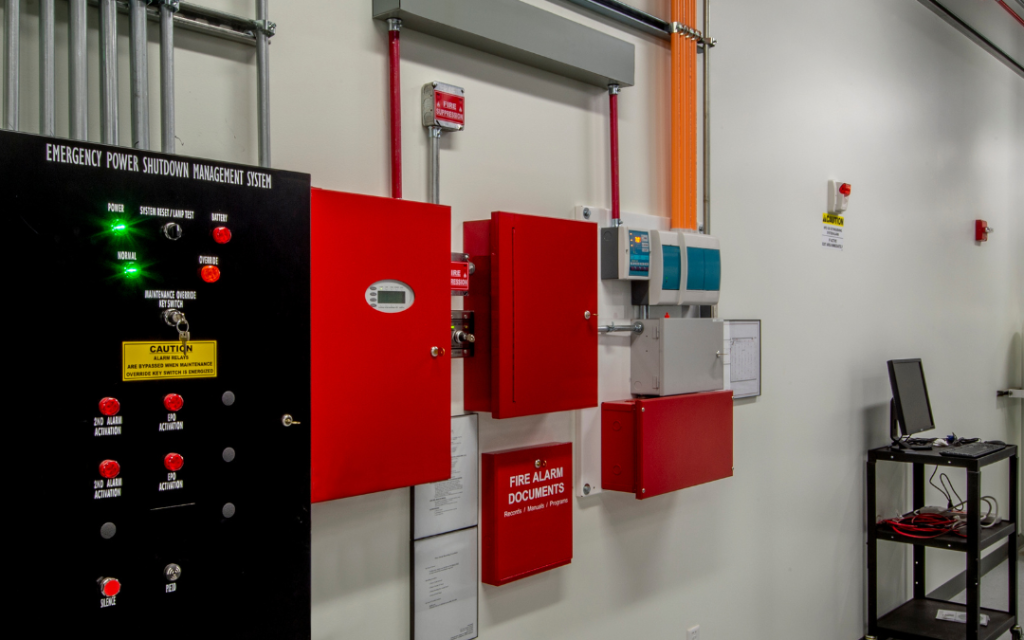
Fire safety certificates play a pivotal role in ensuring that buildings in New South Wales comply with safety regulations designed to protect occupants and property. These certificates confirm that fire safety measures meet the required standards, as outlined in the building’s fire safety schedule. Alongside compliance, there are prerequisites and guidelines tied to local safety codes that must be addressed before inspections take place.
What is a Fire Safety Certificate?
A fire safety certificate is a formal document required under New South Wales legislation. It certifies that all essential fire safety measures within a building have been assessed and installed in accordance with the relevant safety codes and standards. Typically, the owner or their agent is responsible for obtaining this certificate before the building is occupied or following major renovations.
This document serves as proof that fire safety measures such as sprinklers, smoke alarms, exit signage, and other systems are operational and compliant. The certificate must be lodged with the local council and displayed within the building for accessibility.
Compliance with Fire Safety Standards
Fire safety compliance involves meeting the measures outlined in the Environmental Planning and Assessment Regulation 2021. These measures vary by property type but generally include the installation, maintenance, and certification of fire protection systems.
Key elements of compliance include:
- Adherence to the Building’s Fire Safety Schedule
The fire safety schedule lists all measures required for the building. These measures, including alarms, emergency lighting, and fire doors, must function effectively and comply with the Australian Standards.
- Regular Inspections and Maintenance
To maintain compliance, property owners must ensure routine servicing of fire safety equipment. Inspections verify that systems are in working order and ready to perform under emergency conditions.
- Annual Declarations
The annual fire safety statement confirms ongoing compliance. This statement must be submitted yearly to both the local council and the Fire and Rescue NSW service.
- Professional Certification
Qualified practitioners must inspect and certify the performance of each fire safety measure. Their role ensures all systems meet the required standards and align with legal expectations.
Prerequisites Before a Fire Safety Inspection
Before scheduling an inspection to obtain a fire safety certificate, several key steps must be completed:
- Installation of Fire Safety Measures
Ensure all required systems, such as alarms, sprinkler systems, extinguishers, and evacuation signage, are installed in accordance with the fire safety schedule. Each measure must meet the performance standards specified by the Australian Standards.
- Maintenance and Testing
Regular maintenance is vital to ensure all equipment operates correctly. Testing includes checking pressure levels in extinguishers, the functionality of alarms, and the condition of emergency exits.
- Engagement of Qualified Practitioners
Fire safety inspections must be carried out by licensed professionals. They evaluate the performance and compliance of all systems based on the safety codes and regulations.
- Documentation Preparation
Maintenance logs, past inspection records, and any previously issued fire safety certificates should be organised. Inspectors may review these documents during their assessment.
- Repairs and Replacements
If any fire safety measure is defective or outdated, it must be repaired or replaced prior to the inspection. This ensures that all systems meet the required performance standards.
- Scheduling the Inspection
Once all prerequisites are met, an inspection can be scheduled with licensed professionals. Property owners should ensure full access to all fire safety systems during the assessment.
The Role of the Annual Fire Safety Statement
The annual fire safety statement Sydney is a recurring requirement for building owners to confirm that fire safety measures are maintained and operational. It serves as an annual declaration of compliance with fire safety standards.
This statement includes an inspection and certification process conducted by accredited practitioners. It must be submitted every 12 months, and the building owner is responsible for lodging it with the local council.
The annual fire safety statement cost can vary depending on factors such as the building’s size, complexity of the fire safety systems, and any required repairs or maintenance.
Understanding the Safety Codes
Compliance with fire safety measures in New South Wales aligns with the Environmental Planning and Assessment Regulation 2021 and Australian Standards, such as AS 1851. These codes specify performance requirements for fire protection systems, testing intervals, and inspection protocols.
Adhering to these standards ensures that buildings meet legal obligations and are prepared for emergencies. Regular maintenance and inspections provide an added layer of security, protecting both occupants and property.
The Importance of Professional Guidance
Navigating fire safety requirements can be challenging, which is why professional guidance is invaluable. Qualified fire safety practitioners ensure systems are installed, maintained, and inspected according to legal standards. Their expertise helps property owners stay compliant while minimising risks.
Partnering with experts for the preparation and submission of a fire safety certificate streamlines the process, reducing stress and ensuring all measures are in place.
Final Thoughts
Fire safety certificates and compliance measures are essential for safeguarding lives and property in New South Wales. By adhering to the fire safety schedule, maintaining systems, and fulfilling inspection requirements, building owners can ensure their properties meet legal standards and remain prepared for emergencies.
From installation to the annual review process, compliance requires a structured approach and professional oversight. Addressing these requirements not only ensures legal adherence but also contributes to creating safer environments for all occupants.
